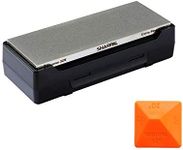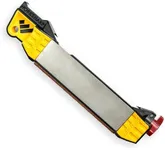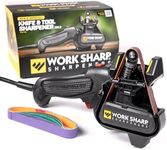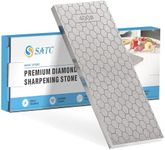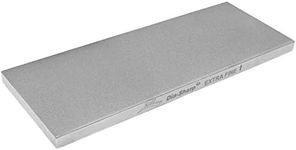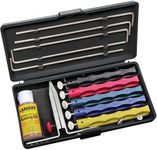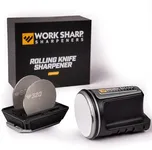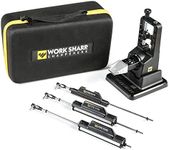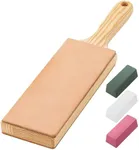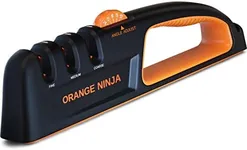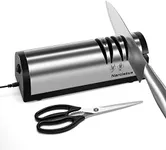Buying Guide for the Best Diamond Sharpeners
Choosing the right diamond sharpener can significantly impact the ease and effectiveness of keeping your tools and knives in top condition. Diamond sharpeners are known for their durability and ability to sharpen quickly, but selecting the right one involves understanding several key specifications. By considering these factors, you can ensure that you pick a diamond sharpener that best fits your needs and preferences.Grit SizeGrit size refers to the coarseness or fineness of the diamond particles on the sharpener. This is important because it determines how much material is removed from the blade and how fine the edge will be. Grit sizes are usually categorized as coarse (200-400 grit), medium (600-800 grit), and fine (1000-1200 grit). Coarse grits are best for repairing damaged edges or sharpening very dull blades, medium grits are suitable for regular sharpening, and fine grits are ideal for honing and polishing the edge. Choose a grit size based on the condition of your blades and the level of sharpness you desire.
Size and ShapeThe size and shape of the diamond sharpener affect its portability and the types of tools it can sharpen. Larger sharpeners provide a more stable surface and are better for sharpening larger knives and tools, while smaller, more compact sharpeners are easier to carry and store, making them ideal for on-the-go use. The shape can also vary, with flat stones being versatile for most sharpening tasks, and rod or tapered shapes being better for serrated edges and smaller tools. Consider where and how you will use the sharpener to determine the best size and shape for your needs.
Monocrystalline vs. Polycrystalline DiamondsDiamond sharpeners can use either monocrystalline or polycrystalline diamonds. Monocrystalline diamonds are single, large crystals that are more durable and longer-lasting, making them ideal for heavy-duty sharpening tasks. Polycrystalline diamonds consist of many smaller crystals bonded together, which can wear down more quickly but provide a more aggressive sharpening action. If you need a sharpener for frequent use and long-term durability, monocrystalline diamonds are a better choice. For occasional use or when a faster sharpening process is needed, polycrystalline diamonds may be sufficient.
Base MaterialThe base material of the diamond sharpener affects its stability and ease of use. Common base materials include plastic, metal, and wood. Plastic bases are lightweight and often more affordable, but may not provide as much stability. Metal bases are durable and provide a solid, stable surface for sharpening, while wood bases offer a traditional look and can also be quite stable. Consider the environment in which you will be using the sharpener and your preference for stability and aesthetics when choosing the base material.
Ease of CleaningKeeping your diamond sharpener clean is essential for maintaining its effectiveness. Some sharpeners are easier to clean than others, depending on their design and materials. Look for sharpeners with a smooth surface that can be easily wiped down or rinsed with water. Some models may also come with a cleaning tool or instructions for proper maintenance. If you plan to use the sharpener frequently, choosing one that is easy to clean will save you time and effort in the long run.
